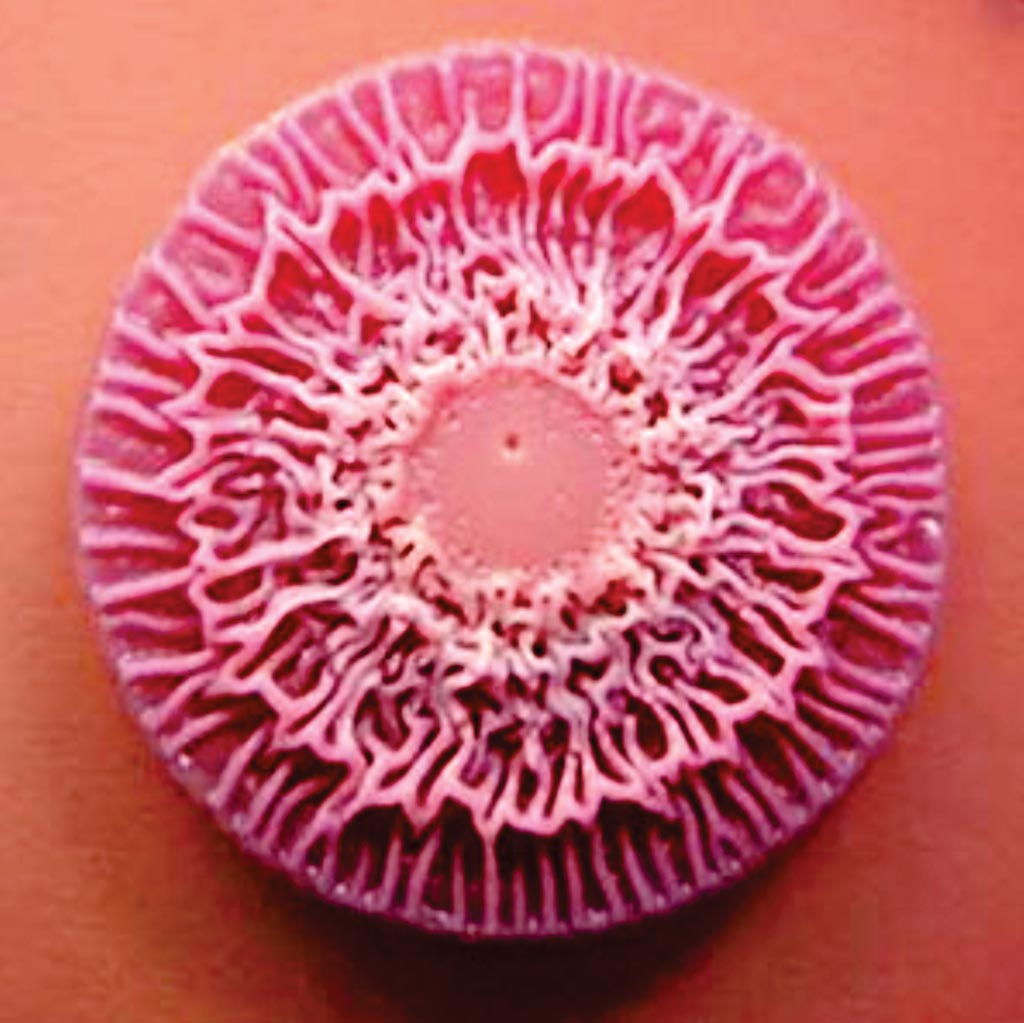Antigenic Targets Compared for Melioidosis Serodiagnosis
By LabMedica International staff writers
Posted on 13 Apr 2017
Melioidosis, caused by Burkholderia pseudomallei, is a life-threatening infection endemic in tropical countries and definitive diagnosis of the disease relies upon bacterial culture, which requires suitable laboratory facilities and reliable antibody testing.Posted on 13 Apr 2017
A rapid point-of-care serological test with high sensitivity and specificity would be ideal for use in resource-poor areas where melioidosis is endemic. To develop such assays, identification of good serologic markers is critical. It is also important to evaluate whether an assay can differentiate between acute melioidosis and previous infection or exposure.

Image: The Gram-negative Burkholderia pseudomallei in culture with its characteristic colony shape (Photo courtesy of MMG).
Scientists at Mahidol University and their colleagues collected two sets of anonymous human serum samples were used to evaluate the enzyme-linked immunosorbent assays (ELISAs). The first set included 141 on-admission sera from culture-confirmed B. pseudomallei infected patients who were admitted to hospital, 188 serum samples obtained from healthy donors from the same area in northeast Thailand and 90 serum samples obtained from healthy USA donors.
To evaluate the diagnostic potential of hemolysin co-regulated protein (Hcp1) and O-polysaccharide (OPS) antigens for determination of antibody titers in different groups of melioidosis patients, another set of independent serum samples was used. This set included serum samples obtained from 200 patients with culture-confirmed melioidosis collected a median of 5 days, and 113 at 12 weeks and 110 at 52 weeks post-recovery. The patients were recruited in a longitudinal clinical and immunological study during September 2012-October 2015.
The team detected high levels of antibodies to Hcp1 and OPS in serum from melioidosis patients upon admission and showed that anti-Hcp1 levels declined post-recovery. When serum samples from endemic areas were tested, the performance of the Hcp1-ELISA and combined Hcp1/OPS-ELISA were higher than the OPS-ELISA. When serum from non-endemic areas was tested, the combined Hcp1/OPS-ELISA gave the highest performance. Both the OPS- and Hcp1-based ELISAs were useful for detection of antibodies in various groups of patients including diabetics.
The authors concluded that that Hcp1 and OPS are useful targets for serodiagnosis of melioidosis in various groups of patients. Overall, the Hcp1-ELISA provided better diagnostic assay values than the OPS-ELISA. When used in non-endemic areas, a combined Hcp1/OPS showed increased sensitivity compared to the ELISAs for Hcp1 or OPS alone. Their results support accelerated development of Hcp1-based assays for a much needed point of- care test for the diagnosis of acute melioidosis. The study was published on March 30, 2017, in the journal Public Library of Science Neglected Tropical Diseases.













